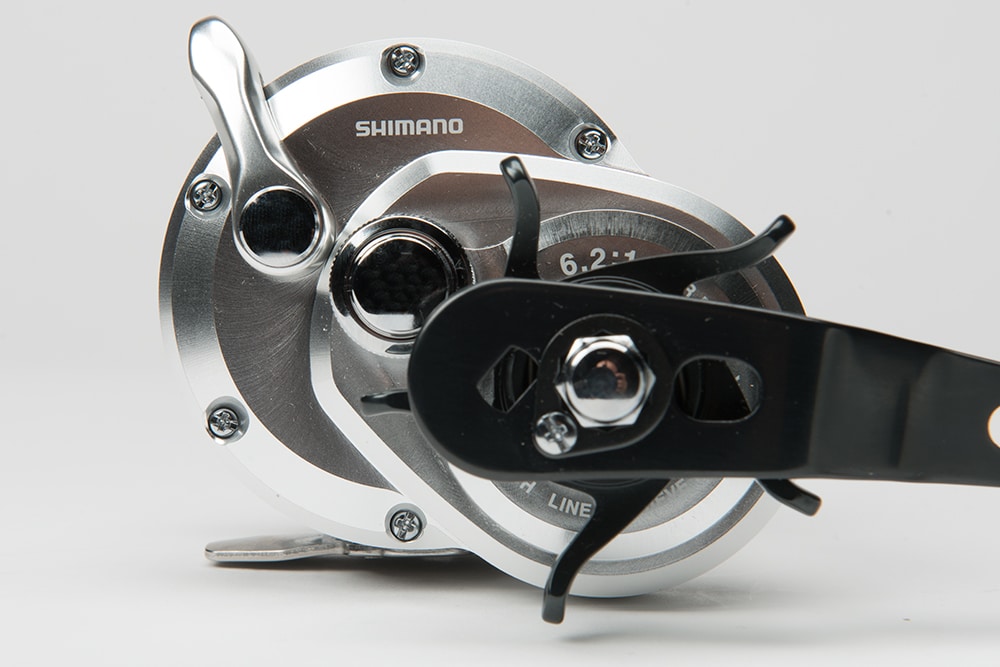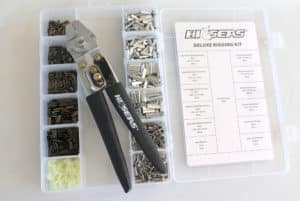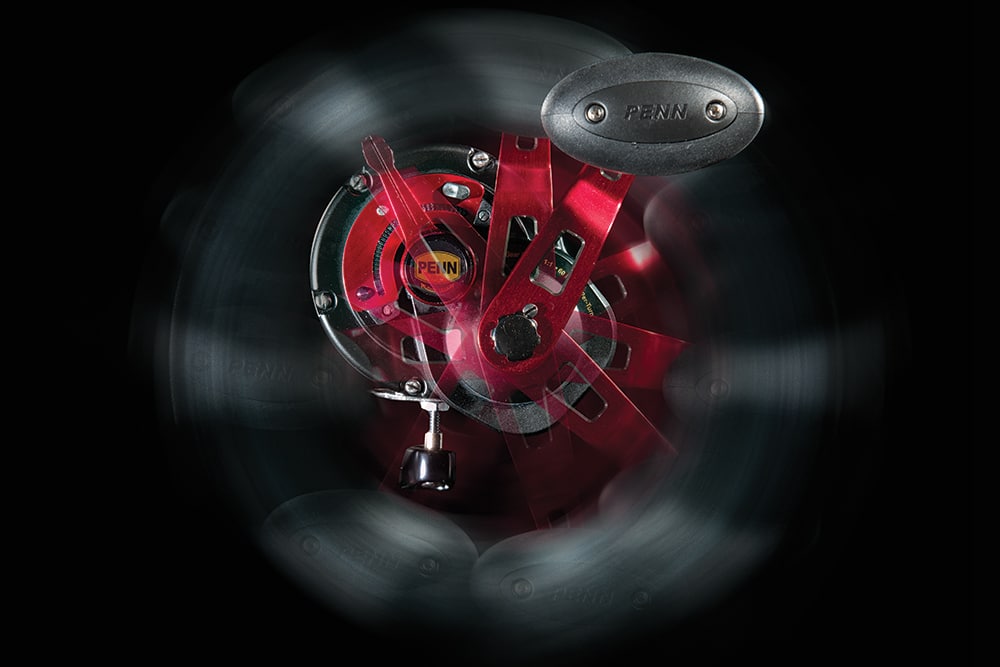
Up to Speed
Power versus speed — it’s the main factor conceded when fishing high-speed reels. An angler loses the extra cranking power of lower-gear reels, but gains the ability to keep up with fast-moving fish that cause slack in line, species like bonefish, redfish, kingfish and blackfin tuna.
“Fighting heavy fish, such as big tuna and grouper, is easier at lower speeds,” says Brandon Cotton, Okuma’s marketing manager.“ With big fish, it takes more effort to turn that handle on a higher-speed reel. Think of pedaling a 10-speed bike; lower gears are much easier to pedal than higher gears.”
High-speed reels excel in many on-the-water scenarios.
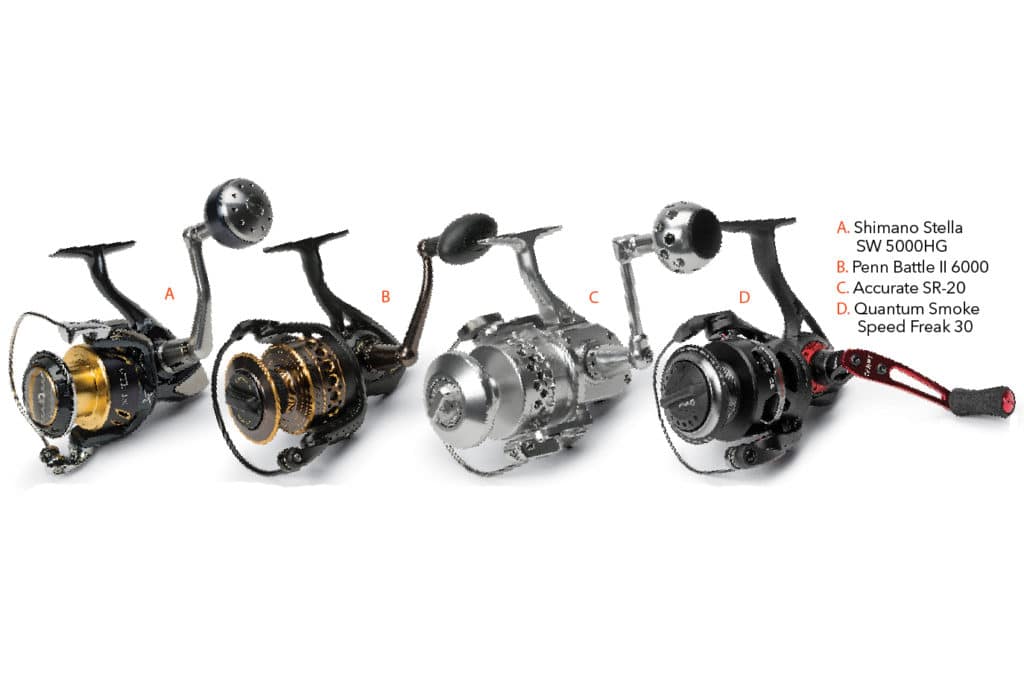
“Plenty of artificial lures work best only when retrieved at very high speeds,” points out Steve Carson, director of Penn Fishing University. “Wahoo and jacks, in particular, seem to have a definite ‘chase’ mode.”
Speed and yo-yo jigging demand quickness to trigger a reaction bite. Kite fishing for sailfish, a method that allows slack in the line when a billfish strikes, necessitates a fast reel to come tight quickly. Even keeping up with a bonefish screaming and zigzagging across the flats requires quick line pickup.
The trade-off between speed and cranking power is directly related to specific gear ratios and inches per turn.
“Baitcast and conventional reels have the most efficient power transmission, so they have the least power lost when utilizing higher gear ratios,” says Littau. “You can crank more load with less effort on a baitcasting reel than you can with a spinning reel of the same gear ratio (all else being equal).”
Golden Ratio
The gear ratio of a casting reel is the number of spool revolutions per handle turn. Gear ratio is calculated by the number of teeth on the main gear divided by the number of teeth on the pinion gear, says Penn’s product manager Cameron Hughes.
“There are two gears within each reel — the pinion gear and the main gear,” says Robby Gant, Shimano’s product manager. “The main gear drives the pinion gear, which turns the spool. A higher-gear-ratio reel has a larger main gear and gear box, as the pinion gear stays the same size.”
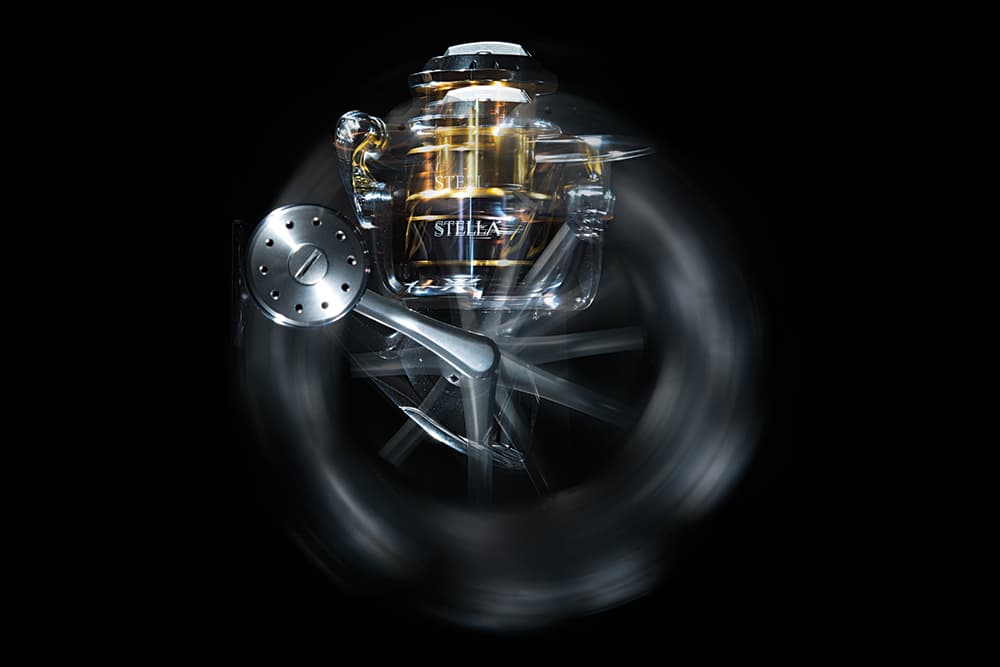
A 6-to-1 gear ratio lets an angler know that the spool turned six times with one crank. On high-speed spinning reels, it’s the same, except instead of the spool turning, it’s the rotor. In general, a lower gear ratio equates to lower cranking speeds, and vice versa.
A ratio of 6-to-1, 7-to-1 or higher is considered high-speed, depending on whom you ask. Anything above 5-to-1 is considered high speed for spinning reels. “There are reels on the market that offer faster gears, such as 8-to-1, but most of those really high-gear reels have a small- er spool,” says Gant, “which in turn give you less line pickup.”
Line pickup is measured in inches per turn — or IPT — a term mainstreamed by freshwater bass anglers. Instead of the gear ratio, IPT is a better indicator of the actual speed of a reel. Different-size spools, both large and small, affect and negate high-gear ratios.
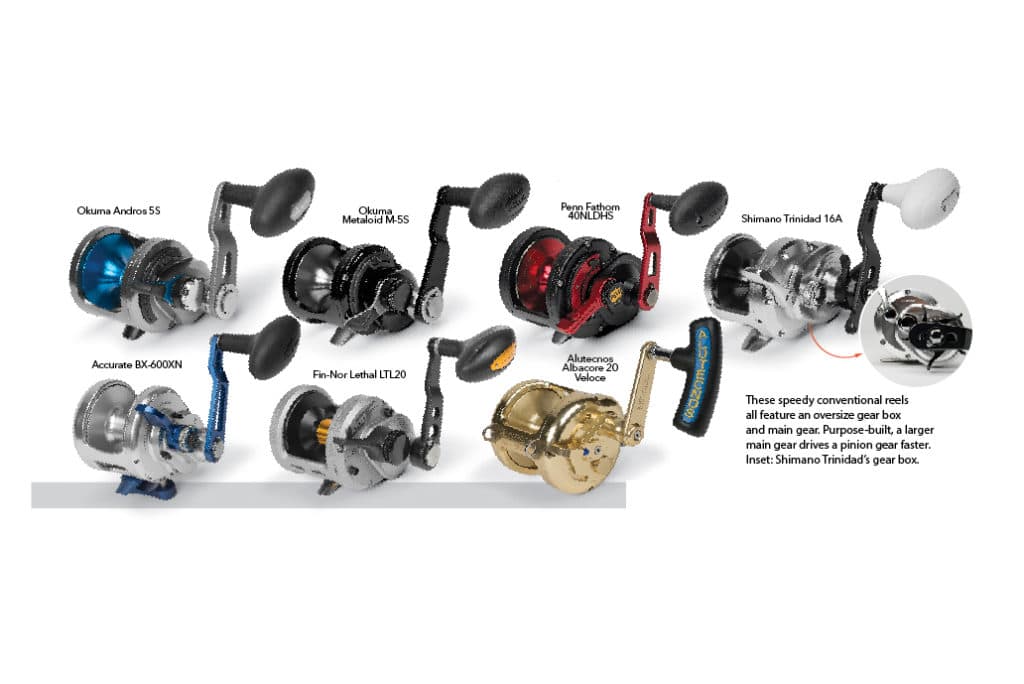
Quick Crank
When it comes to IPT, the larger the spool diameter, the higher the line retrieval, says Ben Secrest, vice president of marketing at Accurate Fishing. While gear ratio measures cranking power and speed, inches per turn measures only the line-retrieval speed.
“Make eight wraps of line around a pencil and measure; then make seven wraps of line around a marker,” says Gant. Even though you made one fewer wrap around the marker, when the two lines are compared, notice that the marker with the larger circumference produces a longer piece of line.
Inches per turn decreases if the line on the spool is lower than maximum capacity, explains Secrest. “During any type of battle, as a fish pulls line off the spool, line retrieval isn’t as effective compared with a full spool.”
IPT is loosely calculated by multiplying the gear ratio and the spool circumference, says Chris Littau, product manager at Zebco. If either factor goes up, so does the IPT. Anglers should use different reels with higher or lower gear ratios and IPT dependent on the species targeted; you don’t want to target a 300-pound yellowfin tuna with a 7-to-1 gear ratio.
So what happens if you find yourself hooked to a monster fish with a reel that has high IPT but not enough cranking and pulling power? First, keep the rod bent and gain line however necessary.
“A more parabolic rod gives the angler enhanced ability to gain line with a fast- er reel just from the pumping technique applied — this is evident watching jiggers with high-speed reels,”says Secrest. “The parabolic action negates some of the lost power because an angler can physically pull on the rod. Anglers can even walk backward — pointing the rod toward the fish — to gain line.”
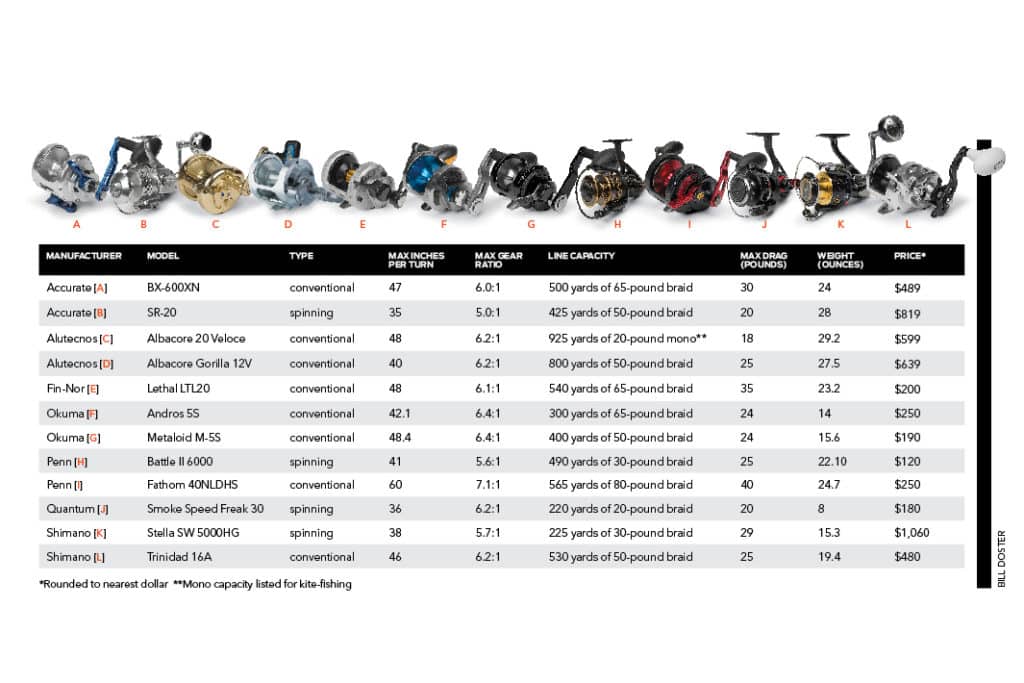
Grading Gears
High-speed reels don’t produce much heat, but they do impart massive amounts of strain on the main drive and pinion gears. A harder material produces a longer-lasting gear, but that harder metal affects the smoothness of a reel. The way a gear is cut also affects the strength of its makeup. Straight cutting is a traditional method, and that’s worked for years. Now manufacturers use helical (spiral) gear designs to increase smoothness and strength of the teeth.
Brass is the most common gear material in baitcasting reels, though aluminum and stainless are also used. Zinc is the most common in spinning reels, again with aluminum and stainless as options. Stainless steel is most common in conventional reels. Each metal has a disadvantage. Aluminum gears are super light, though they don’t take abuse well. Brass is stronger, but it’s not as strong as stainless steel. Stainless is the strongest, but it does lack smoothness. Still, all these different gears can work well, contingent on the species targeted.
“I would hesitate to advise deciding what product to buy based on gear material,” says Zebco’s Chris Littau. “A reputable reel manufacturer should choose and test the best material for the price and application.”
